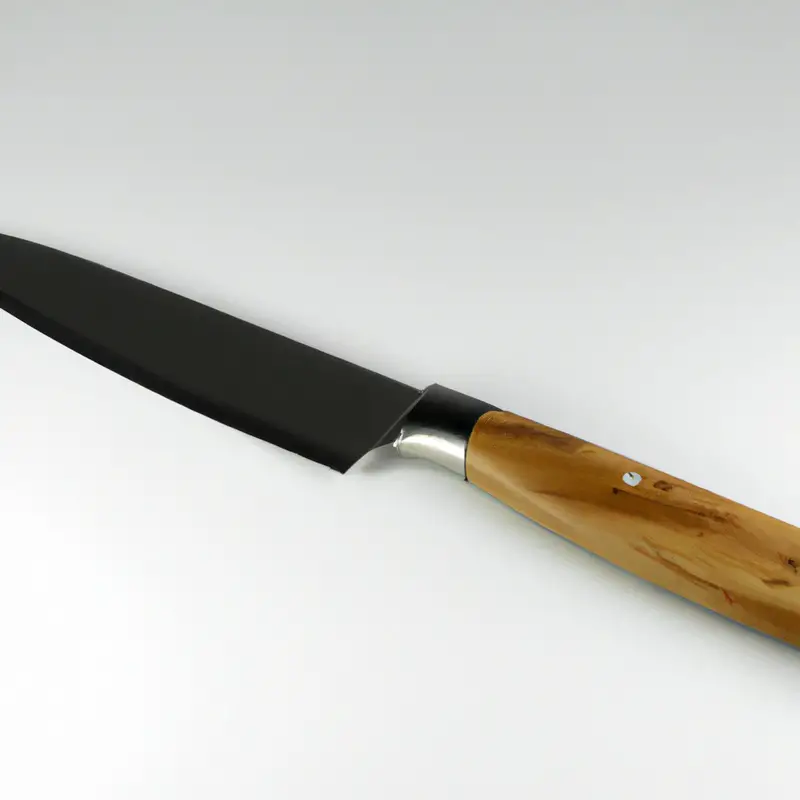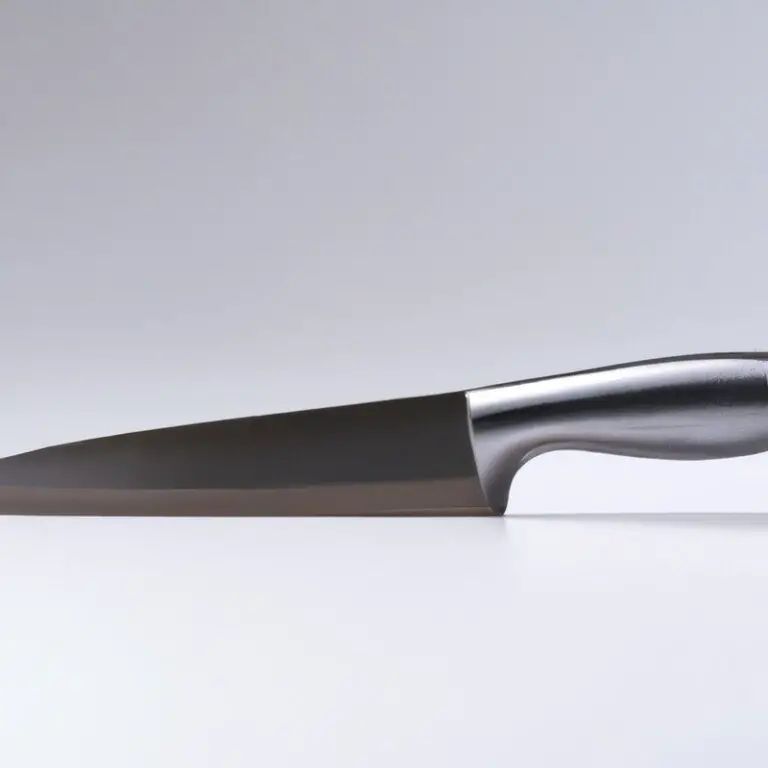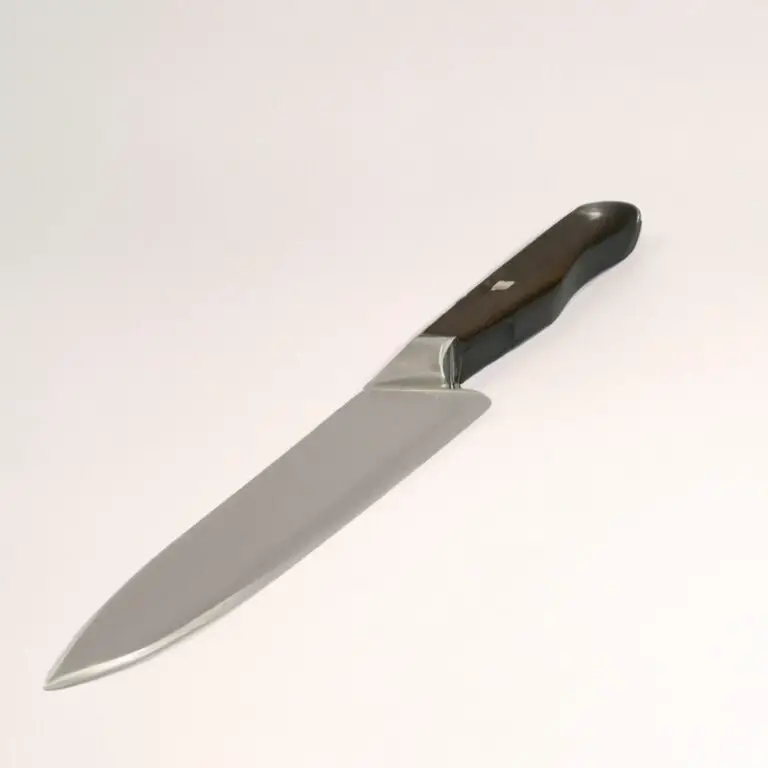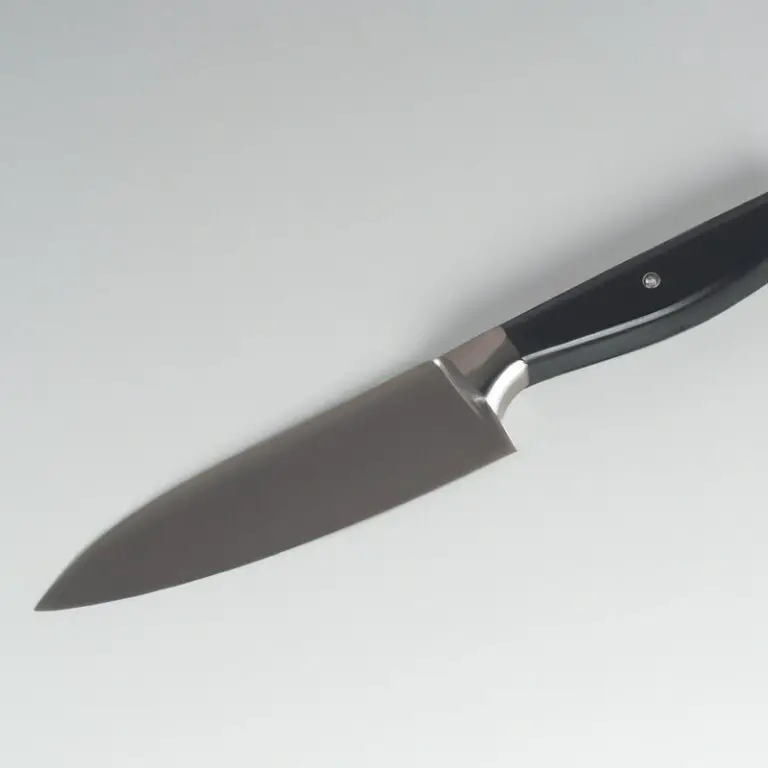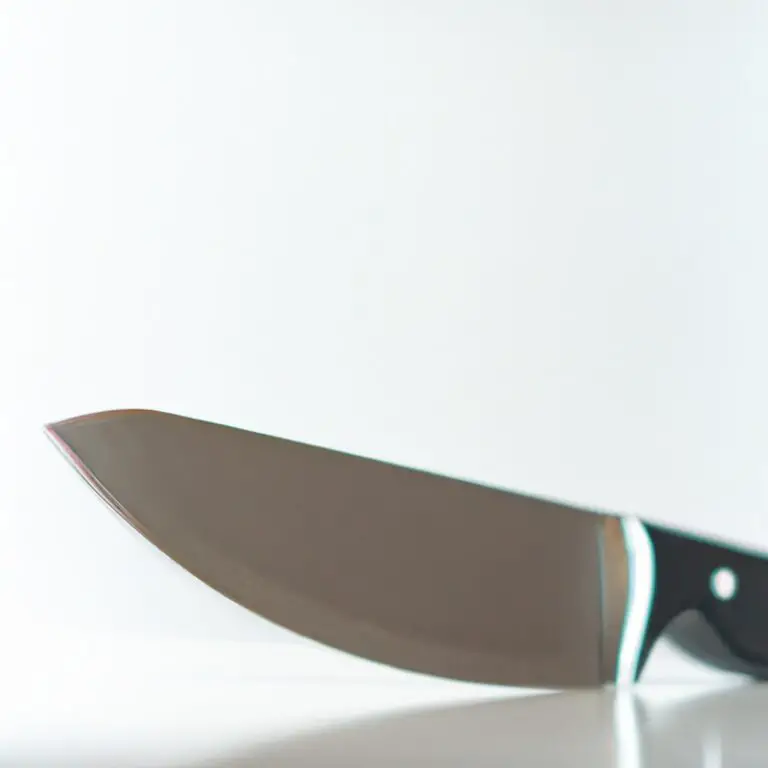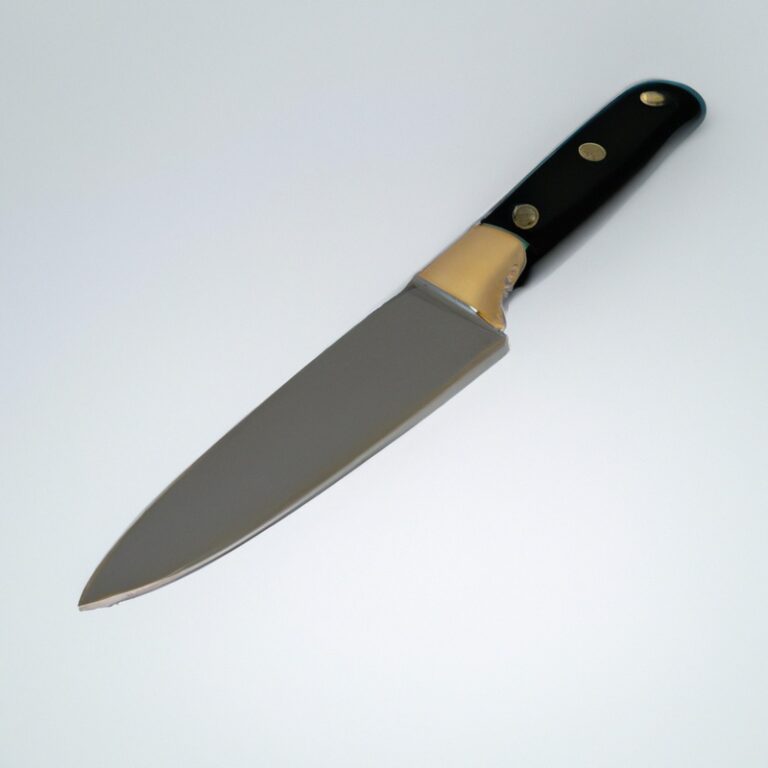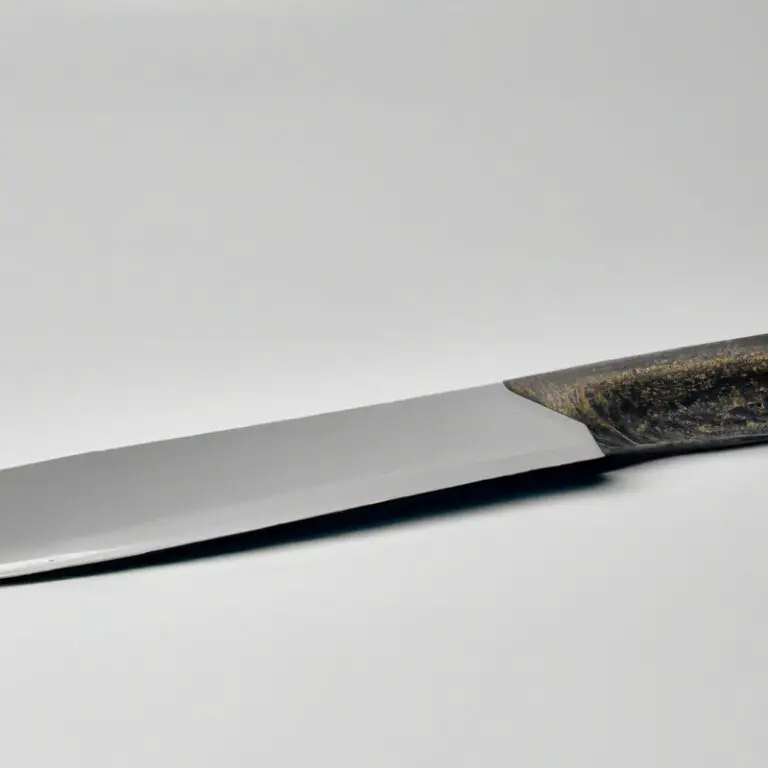What Is a Chef Knife?
Key Takeaways:
- A chef knife is a versatile and essential kitchen tool used for slicing, chopping, and dicing various ingredients.
- The blade of a chef knife is typically between 8 and 10 inches long and has a curved edge that facilitates a rocking motion for efficient cutting.
- A quality chef knife should be made of high-quality steel and have a comfortable handle for a secure grip.
- Proper use and maintenance of a chef knife are crucial to ensure its longevity and effectiveness in the kitchen.
If you’re an avid foodie or a budding chef, you’ve probably heard the word chef knife thrown around frequently. But what exactly is a chef knife, and why is it crucial to have in your kitchen?
As someone who’s spent years working in the culinary industry, I can tell you that a chef knife is much more than just a kitchen tool – it’s essentially an extension of your arm.
In this comprehensive guide, we’ll walk you through everything you need to know about chef knives – from its anatomy and different types to how to hold and grip it like a pro. Let’s get started!
| Feature | Description |
|---|---|
| Blade Length | A chef’s knife typically has a blade length between 6 and 14 inches long. |
| Blade Thickness | The blade thickness can vary, but typically ranges from 2mm to 4mm. |
| Blade Material | Chef knives can be made from various materials, including stainless steel, carbon steel, and ceramic. |
| Handle Material | The handle of a chef knife can be made from wood, plastic, or metal. |
| Weight | A well-balanced chef knife typically weighs between 6 and 12 ounces. |
| Uses | A chef knife is a versatile tool that can be used for chopping, slicing, dicing, and mincing a wide variety of ingredients. |
The Anatomy of a Chef Knife: A Comprehensive Guide to Its Parts
A chef knife consists of several parts that make up their functionality and determine their quality. The most critical parts of a chef knife are the blade, handle, bolster, tang, and heel.
Blade: It is the most prominent part of the knife used for cutting and slicing different types of food items.
The blade’s length, width, and shape determine its functionality. The edge of the blade is beveled to create a sharp cutting surface for precision and accuracy.
Handle: The handle of the chef’s knife provides a comfortable grip and balance to the blade.
The handle’s material, shape, and texture play a significant role in determining the user’s comfort, grip, and control of the knife. Bolster: It is a thick band of metal or plastic that sits between the blade and the handle.
Bolsters are added to improve the balance, stability, and strength of the knife.
Tang: It is the portion of the knife blade that extends into the handle and provides balance and stability to the knife. Tangs come in half, full, or no tangs, depending on the knife’s construction.
Heel: The heel of the knife is the portion of the blade nearest to the handle and is commonly used to cut through harder food items, such as bones.
Understanding the different parts of a chef knife is crucial in choosing the right one for your needs, caring for it properly, and using it safely. By knowing the parts of a chef knife, you can choose one that fits your needs and budget and provides you with the accuracy, comfort, and control you need in the kitchen.
Understanding the Different Types of Chef Knives: Which One is Right For You?
There are many different types of chef knives available in the market, each designed for specific tasks. It’s essential to understand the differences and choose the right one for your needs.
Here are three common types of chef knives:
- Gyuto Knife: It’s a versatile Japanese chef knife with a thin and sharp blade suitable for slicing, dicing, and chopping vegetables, fruits, and meats.
- Santoku Knife: This Japanese knife is shorter than a gyuto knife and features a wide blade with a flat edge, ideal for chopping and slicing vegetables.
- Chef’s Knife: This Western-style knife comes in various lengths, with a broad blade and a pointed tip that makes it easy to rock back and forth while chopping. It’s perfect for all-purpose tasks such as cutting meat and slicing vegetables.
When choosing a chef knife, consider the size, weight, and balance, and ensure it feels comfortable in your hand. It’s also essential to invest in a high-quality knife that fits your budget and needs.
The Importance of Blade Material: Which Metal Makes the Best Chef Knife?
The blade material is a crucial factor to consider when choosing a chef knife. Different metals have unique properties that affect the knife’s sharpness, durability, and performance.
Generally, high-carbon stainless steel is the most popular material for chef knives due to its rust resistance, easy maintenance, and long-lasting edge retention.
However, some chefs prefer other materials like Damascus steel, VG-10, or ceramic, which offer varying levels of sharpness and hardness. Ultimately, the best metal for a chef knife depends on personal preferences, usage frequency, and budget.
It’s advisable to invest in a high-quality chef knife made of premium blade material for optimal performance and longevity.
The Right Way to Hold and Grip a Chef Knife: Tips from Professional Chefs
The proper way to hold and grip a chef knife is crucial in ensuring safe use and efficient cutting. Professional chefs recommend the pinch grip, where the blade is held between the thumb and forefinger, with the other fingers wrapped around the handle for stability.
The grip should be firm but not too tight, with the wrist and forearm in alignment to prevent strain.
It’s also important to use the blade’s weight instead of relying solely on arm strength for smoother cutting. Experts also advise against holding the blade with the fingertips or gripping the handle too tightly, as it can lead to accidents and discomfort.
Practicing the right grip and technique can improve your cutting skills and reduce the risk of injuries.
Care and Maintenance of Your Chef Knife: How to Keep it Razor Sharp
To maintain the razor-sharp edge of your chef knife, here are some tips:
- Wash your knife by hand and never put it in a dishwasher to prevent damage to the blade.
- Dry your knife immediately after washing using a soft cloth to prevent rust formation.
- Store your knife in a sheath, blade guard or knife block to prevent it from getting damaged.
- Regularly hone your knife using a honing steel or honing rod to keep the blade edge aligned.
- Sharpen your knife when it becomes dull using a sharpening stone or sharpening system to restore the sharpness of the blade edge.
- Use a honing guide for precise angle sharpening.
By following these tips, your chef knife will maintain its sharpness and perform flawlessly for your culinary needs.
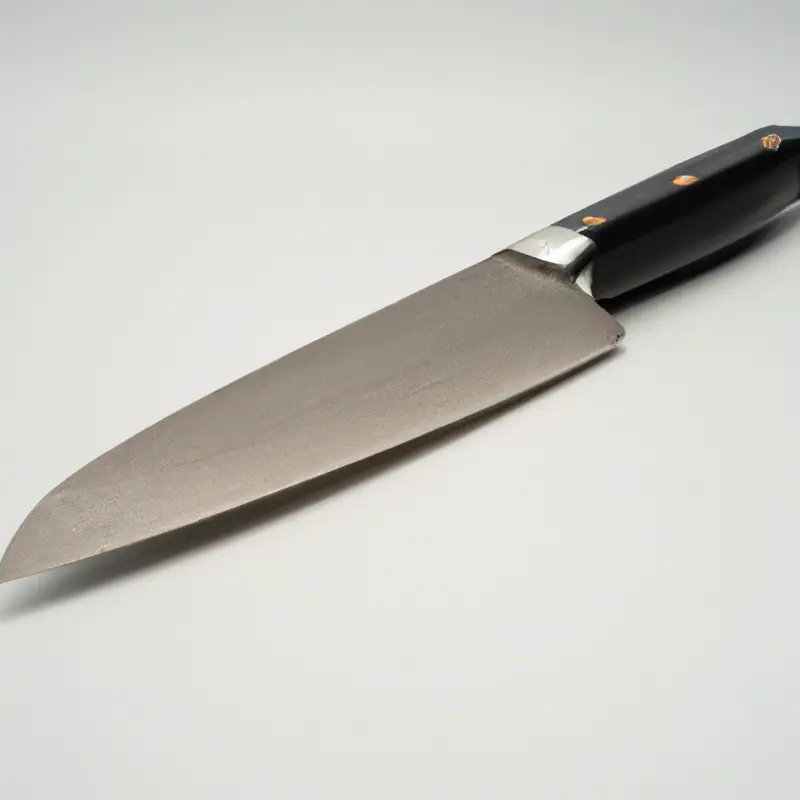
Sharpening Your Chef Knife: What Are the Best Techniques and Tools?
To keep your chef knife working efficiently, you need to sharpen it regularly. The right way to sharpen your knife is by using a sharpening stone, a honing steel, or an electric sharpener.
Sharpening stones are the most traditional method of sharpening.
A sharpening stone is a rectangular, coarse stone that you use to sharpen your knife by running the blade along it at a specific angle. Some of the best sharpening stones include the King Japanese Sharpening Stone, Smith’s CCKS 3-Stage Knife Sharpener, and Spyderco Tri-Angle Sharpmaker.
A honing steel is a metal rod with a handle and a sharpening surface.
It is used for straightening the blade and removing any minor imperfections. You need to start by holding the honing steel vertically, rest the base on a stable surface, and then run the blade along the sharpener at a specific angle.
Some of the best honing steels in the market include the Wusthof Stainless Steel Honing Steel and the Lansky Sharpeners Quick Fix Pocket Sharpener.
Finally, you have electric sharpeners, which are specially designed to sharpen blades quickly and effectively. Some of the best electric sharpeners available in the market today include the Chef’s Choice Trizor XV EdgeSelect Electric Knife Sharpener and the Work Sharp Culinary E5 Kitchen Knife Sharpener.
Ensure you carefully read the manual and follow the recommended instructions when sharpening your chef knife.
The key is to be patient, practice, and maintain the right angle. A sharp chef knife makes all the difference when it comes to food preparation, so it’s worth investing in the right tool and approach to sharpening it.
Honing vs. Sharpening: What’s the Difference and Why You Need Both
To keep a chef’s knife in its best condition, it is necessary to hone and sharpen it regularly. Honing realigns the blade while sharpening grinds the edge to make it sharper.
Honing should be done frequently, ideally before each use, while sharpening is needed less frequently.
Honing prolongs the edge sharpness, while sharpening brings back the edge sharpness. Both honing and sharpening are crucial in maintaining a chef’s knife, and you need to do both to keep the knife in top shape.
How to Use a Chef Knife Like a Pro: Basic Techniques and Cutting Styles
To use a chef knife like a pro, you should follow some basic techniques and cutting styles. Here are the key pointers:
- The Pinch Grip: Hold the handle of your chef knife with your thumb and index finger, supported by the middle finger tucked underneath. This allows for better control and less strain on your wrist.
- The Rocking Motion: When chopping, slicing, or dicing, use a gentle rocking motion by moving the blade up and down while maintaining contact with the cutting board. This allows for precision and speed.
- The Claw Technique: To protect your fingers, use the claw technique by keeping your non-dominant hand in a claw shape, with the fingertips tucked under and the knuckles facing forward. Place the food item on the cutting board and use the chef knife to slice or chop from the back of the blade towards the front in a controlled motion.
- The Chop-and-Slide Method: For larger ingredients, such as carrots or cabbage, use the chop-and-slide method by cutting off a small section, then sliding the ingredient over and repeating until desired size is achieved.
- The Bias Cut: For added presentation and texture, use the bias cut technique, which involves slicing at a 45-degree angle. This is particularly useful for cutting raw proteins, such as beef or fish, or to create thin ribbons of vegetables, like zucchini or carrots.
By following these basic techniques and cutting styles, you can use your chef knife like a pro. Remember to always use a sharp blade and keep your fingers safe with the claw technique.
Happy chopping!
The Benefits of Investing in a High-Quality Chef Knife: Is it Worth the Cost?
Investing in a high-quality chef knife can be a significant expense, but it is worth it in the long run. Here are some benefits of purchasing a high-quality chef knife:
- Durability: High-quality knives are made from superior materials that can withstand heavy use and last for many years.
- Precision: A good chef knife has a razor-sharp edge, which means you can cut and chop with precision, making cooking easier and more enjoyable.
- Comfort: High-quality chef knives are designed with ergonomics in mind, which means that they feel comfortable in your hand. This allows you to use them for an extended period without any discomfort.
- Versatility: A high-quality chef knife can effectively handle various cutting tasks and help with a range of cutting techniques.
- Confidence: Using a high-quality chef knife is a joy, and it gives you confidence about your abilities in the kitchen.
When you invest in a high-quality chef knife, you are not only purchasing a useful tool, but you are also investing in your culinary journey.
The Top Chef Knives on the Market Today: Our Recommendations and Reviews
We recommend the following top chef knives on the market today:
- Wüsthof Classic Chef’s Knife: This German-made knife has a comfortable handle and a sharp, durable blade.
- Global G-2 Chef’s Knife: This Japanese-made knife is lightweight with a balanced design and a sharp, thin blade.
- Shun Classic Chef’s Knife: This Japanese-made knife has a durable and sharp blade, with a comfortable handle made of Pakkawood.
- Victorinox Fibrox Pro Chef’s Knife: This Swiss-made knife is budget-friendly and has an ergonomic handle, with a sharp blade that is easy to maintain.
- Mac Professional Chef’s Knife: This Japanese-made knife has a thin and sharp blade with a comfortable wooden handle.
When purchasing a chef knife, it is important to consider factors such as blade material, handle comfort, and overall balance. It is also important to invest in a high-quality knife for extended durability and performance.
These knives have all been highly rated and recommended by professional chefs and customers alike, ensuring their credibility and effectiveness in the kitchen.
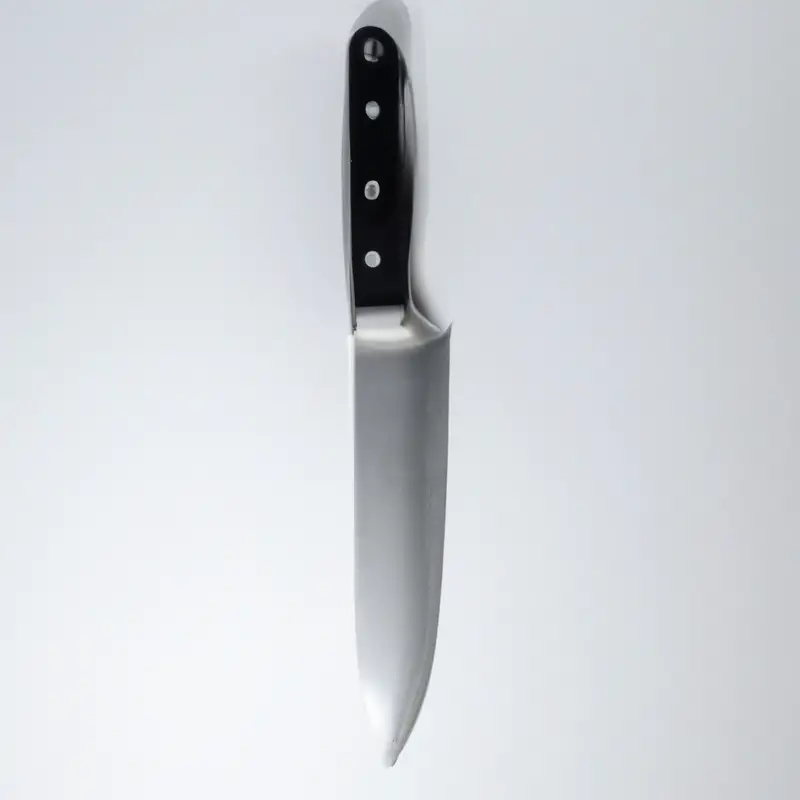
Final Verdict
A chef knife is an essential tool for any home cook or professional chef. Understanding the anatomy, types, and materials used in a chef knife will help you make an informed purchase and ensure that you are using it correctly.
Proper care and maintenance, along with regular sharpening and honing, will keep your knife at its best.
By investing in a high-quality chef knife, you are investing in your culinary skills and ensuring a lifetime of enjoyable cooking experiences. Remember, a chef knife is more than just a kitchen tool – it’s an extension of your hand.
So, choose wisely and wield it with confidence.

